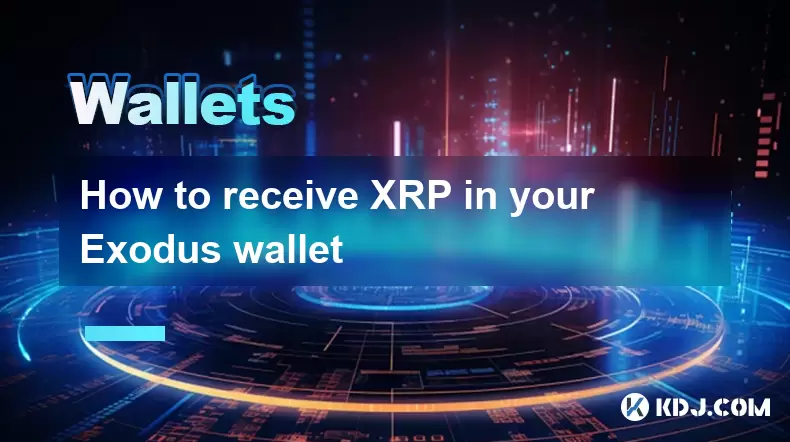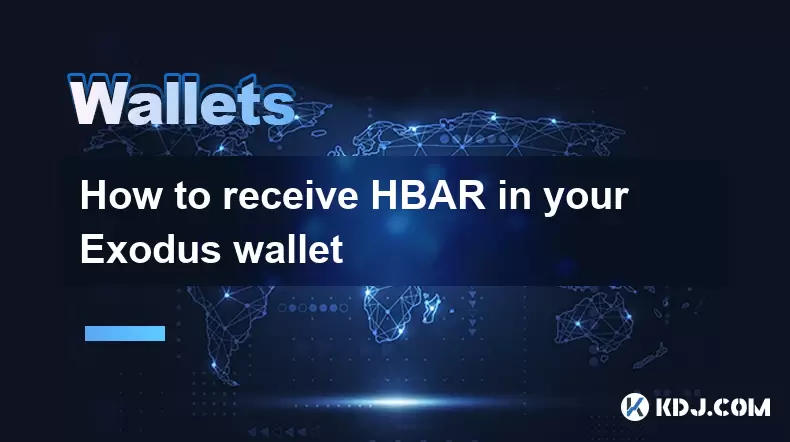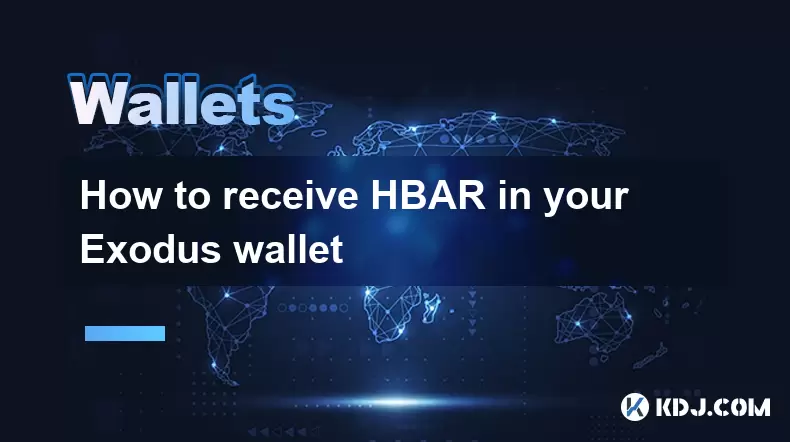-
 Bitcoin
Bitcoin $116400
-0.36% -
 Ethereum
Ethereum $4033
3.40% -
 XRP
XRP $3.302
-1.26% -
 Tether USDt
Tether USDt $1.000
-0.02% -
 BNB
BNB $796.1
1.67% -
 Solana
Solana $177.8
1.89% -
 USDC
USDC $0.9999
0.00% -
 Dogecoin
Dogecoin $0.2314
4.09% -
 TRON
TRON $0.3381
0.14% -
 Cardano
Cardano $0.7989
1.22% -
 Stellar
Stellar $0.4496
-1.84% -
 Chainlink
Chainlink $20.42
9.42% -
 Hyperliquid
Hyperliquid $41.17
0.88% -
 Sui
Sui $3.914
3.77% -
 Bitcoin Cash
Bitcoin Cash $584.7
1.52% -
 Hedera
Hedera $0.2632
-0.54% -
 Avalanche
Avalanche $24.09
3.40% -
 Ethena USDe
Ethena USDe $1.001
-0.02% -
 Litecoin
Litecoin $123.2
1.33% -
 Toncoin
Toncoin $3.318
-0.04% -
 UNUS SED LEO
UNUS SED LEO $8.984
-0.05% -
 Shiba Inu
Shiba Inu $0.00001323
2.85% -
 Uniswap
Uniswap $10.90
4.41% -
 Polkadot
Polkadot $3.999
3.34% -
 Dai
Dai $1.000
0.01% -
 Cronos
Cronos $0.1630
9.64% -
 Bitget Token
Bitget Token $4.484
0.82% -
 Monero
Monero $272.4
2.44% -
 Pepe
Pepe $0.00001173
6.03% -
 Aave
Aave $290.8
2.88%
How to receive XRP in your Exodus wallet
Exodus generates a new XRP address for each transaction to enhance privacy and security—always use the latest address when receiving funds.
Aug 09, 2025 at 07:00 am

Understanding XRP and the Exodus Wallet
The Exodus wallet is a non-custodial, multi-asset digital wallet that allows users to store, send, and receive various cryptocurrencies, including XRP. Unlike traditional custodial wallets, Exodus gives users full control over their private keys, ensuring enhanced security and ownership of assets. XRP, developed by Ripple Labs, is a digital asset designed for fast, low-cost international money transfers. It operates on the XRP Ledger, a decentralized blockchain that supports quick settlement and minimal transaction fees. Before receiving XRP into your Exodus wallet, it’s essential to understand that each cryptocurrency has a unique address format. The XRP address in Exodus is a string of alphanumeric characters that starts with the letter "r". This address is used exclusively for receiving XRP and must not be used for any other cryptocurrency.
Setting Up Your Exodus Wallet for XRP
To begin receiving XRP, you must first install and set up the Exodus wallet application. Download the official Exodus app from the Exodus website for your operating system—available for Windows, macOS, Linux, iOS, and Android. After installation, launch the application and follow the onboarding process. During setup, you will be prompted to create a 12-word recovery phrase. This phrase is critical for restoring your wallet if you lose access. Write it down and store it securely—never share it or store it digitally. Once the wallet is created, navigate to the Assets tab and locate XRP in the list. If XRP does not appear, use the search function to enable it. Enabling XRP ensures that the wallet generates a valid XRP address for receiving funds.
Generating Your XRP Deposit Address
After enabling XRP in your wallet, you can generate a deposit address. Click on the XRP asset card in your wallet dashboard. A menu will appear with several options. Select Receive. This action opens the receive interface. Here, you will see your XRP wallet address, a long string starting with "r". Below the address, a QR code is automatically generated, which represents the same address in scannable format. This QR code can be shared with the sender for easy scanning. It’s important to note that Exodus generates a new XRP address each time you receive a transaction, enhancing privacy and security through address rotation. Always provide the most recently generated address when requesting funds.
Sharing Your XRP Address Safely
When sending your XRP address to someone, ensure the transmission method is secure. Avoid sharing your address over unencrypted channels such as public social media or unsecured messaging apps. Instead, use end-to-end encrypted platforms or copy the address directly from the Exodus interface to a secure email or message. To copy the address, click the copy icon next to the address string. Double-check that the entire address has been copied correctly—missing or extra characters can result in permanent loss of funds. If the sender uses a QR code, display the QR code from your Exodus wallet on a private screen and let them scan it directly. Never allow others to control your device during this process.
Confirming the XRP Transaction in Your Wallet
Once the sender initiates the transfer, the XRP should arrive in your Exodus wallet within seconds to minutes, thanks to the fast settlement time of the XRP Ledger. Monitor your wallet dashboard for the incoming transaction. The XRP balance will update automatically once the transaction is confirmed on the blockchain. You can view transaction details by clicking on the Activity tab within the XRP section. Here, you’ll see the transaction hash (TxID), the sender’s address, the amount received, and the confirmation status. Clicking the TxID opens a link to a blockchain explorer such as Bithomp or XRPL.org, where you can independently verify the transaction. If the funds do not appear after a reasonable time, confirm that the sender used the correct address and that the transaction was broadcast successfully.
Troubleshooting Common XRP Receiving Issues
Occasionally, users may face issues when receiving XRP. One common problem is sending XRP from exchanges that require a Destination Tag. While Exodus does not require a Destination Tag to receive XRP, some centralized exchanges mandate its use when withdrawing to external wallets. If the sender forgets to include a Destination Tag when required, the transaction may fail or be lost. To prevent this, inform the sender that Exodus does not use Destination Tags and they should leave the field blank if possible. Another issue is sending non-XRP assets to the XRP address. The XRP Ledger supports multiple tokens, but sending non-native tokens to Exodus without proper support can result in loss. Always confirm that only XRP (the native currency) is being sent to your Exodus XRP address. If a transaction appears stuck, check the blockchain explorer using the TxID to determine its status—pending, confirmed, or failed.
Securing Your Received XRP
After successfully receiving XRP, prioritize the security of your wallet. Ensure your device is free from malware and that your operating system is up to date. Enable device-level security features such as PIN codes, biometric authentication, and full-disk encryption. Regularly back up your Exodus wallet by reconfirming your 12-word recovery phrase. Do not store digital copies of your recovery phrase. Consider transferring large amounts of XRP to a hardware wallet for cold storage, though Exodus currently supports integration with Trezor for enhanced security. Avoid clicking on suspicious links claiming to be from Exodus, as phishing attempts are common. Only download updates from the official Exodus website.
Frequently Asked Questions
Can I receive XRP from any exchange using my Exodus wallet address?
Yes, you can receive XRP from most exchanges. However, if the exchange asks for a Destination Tag, you must inform them that Exodus does not require one. Leaving the Destination Tag field blank is crucial. If an exchange insists on entering a tag, contact their support to clarify whether it’s mandatory for Exodus addresses.
What happens if someone sends XRP with a Destination Tag to my Exodus wallet?
Exodus will not recognize the Destination Tag, and the transaction may fail or the funds could be lost. Always instruct senders to omit the Destination Tag when sending XRP to Exodus. The wallet only uses the XRP address for deposits.
Is there a minimum amount of XRP I can receive in Exodus?
The XRP Ledger requires a minimum reserve of 10 XRP to activate an account. However, Exodus wallets are already activated, so you can receive any amount above zero. Very small amounts may not be practical due to network fees, but technically, they are accepted.
Can I use the same XRP address multiple times in Exodus?
Exodus generates a new address for each transaction to improve privacy. While old addresses may still work, it is recommended to use the latest generated address every time you receive XRP. Reusing addresses can reduce your financial privacy.
Disclaimer:info@kdj.com
The information provided is not trading advice. kdj.com does not assume any responsibility for any investments made based on the information provided in this article. Cryptocurrencies are highly volatile and it is highly recommended that you invest with caution after thorough research!
If you believe that the content used on this website infringes your copyright, please contact us immediately (info@kdj.com) and we will delete it promptly.
- Moat Stocks & Mega-Cap Momentum: July's Standout Performance
- 2025-08-09 12:30:12
- Injective (INJ) Eyes $15.39 Breakout Amidst Explosive Network Growth
- 2025-08-09 12:30:12
- HAT Token Mania: Price Surges, Crypto Auctions, and Meme Coin Mayhem
- 2025-08-09 11:10:11
- Undervalued Cryptos Primed for a 2025 Takeoff: MAGACOIN, TRX, and SUI Lead the Pack
- 2025-08-09 11:10:11
- Bitcoin Goes to Harvard: Ivy League Embraces Digital Assets
- 2025-08-09 10:50:12
- Bitcoin, BlockDAG, and Toncoin: Decoding the Crypto Buzz in NYC
- 2025-08-09 11:30:11
Related knowledge

How to manage your portfolio in Exodus wallet
Aug 08,2025 at 10:07pm
Understanding the Exodus Wallet InterfaceThe Exodus wallet is a non-custodial cryptocurrency wallet that supports a wide range of digital assets. When...

How to reset your MetaMask password
Aug 08,2025 at 01:28pm
Understanding the MetaMask Password Reset ProcessMany users confuse the MetaMask password with the seed phrase or private key, but they serve differen...

How to buy Dogecoin on MetaMask
Aug 08,2025 at 03:42am
Understanding Dogecoin and MetaMask CompatibilityDogecoin (DOGE) is a popular meme-based cryptocurrency that operates on its own blockchain, originall...

How to switch between networks in Trust Wallet
Aug 09,2025 at 11:07am
Understanding Network Switching in Trust WalletSwitching between networks in Trust Wallet allows users to manage assets across different blockchains, ...

How to receive HBAR in your Exodus wallet
Aug 08,2025 at 11:28pm
Understanding HBAR and the Hedera NetworkThe HBAR cryptocurrency is the native token of the Hedera Hashgraph network, a distributed ledger technology ...

How to receive HBAR in your Exodus wallet
Aug 09,2025 at 06:07am
Understanding HBAR and the Hedera NetworkHBAR is the native cryptocurrency of the Hedera Hashgraph network, a distributed ledger technology that uses ...

How to manage your portfolio in Exodus wallet
Aug 08,2025 at 10:07pm
Understanding the Exodus Wallet InterfaceThe Exodus wallet is a non-custodial cryptocurrency wallet that supports a wide range of digital assets. When...

How to reset your MetaMask password
Aug 08,2025 at 01:28pm
Understanding the MetaMask Password Reset ProcessMany users confuse the MetaMask password with the seed phrase or private key, but they serve differen...

How to buy Dogecoin on MetaMask
Aug 08,2025 at 03:42am
Understanding Dogecoin and MetaMask CompatibilityDogecoin (DOGE) is a popular meme-based cryptocurrency that operates on its own blockchain, originall...

How to switch between networks in Trust Wallet
Aug 09,2025 at 11:07am
Understanding Network Switching in Trust WalletSwitching between networks in Trust Wallet allows users to manage assets across different blockchains, ...

How to receive HBAR in your Exodus wallet
Aug 08,2025 at 11:28pm
Understanding HBAR and the Hedera NetworkThe HBAR cryptocurrency is the native token of the Hedera Hashgraph network, a distributed ledger technology ...

How to receive HBAR in your Exodus wallet
Aug 09,2025 at 06:07am
Understanding HBAR and the Hedera NetworkHBAR is the native cryptocurrency of the Hedera Hashgraph network, a distributed ledger technology that uses ...
See all articles

























































































